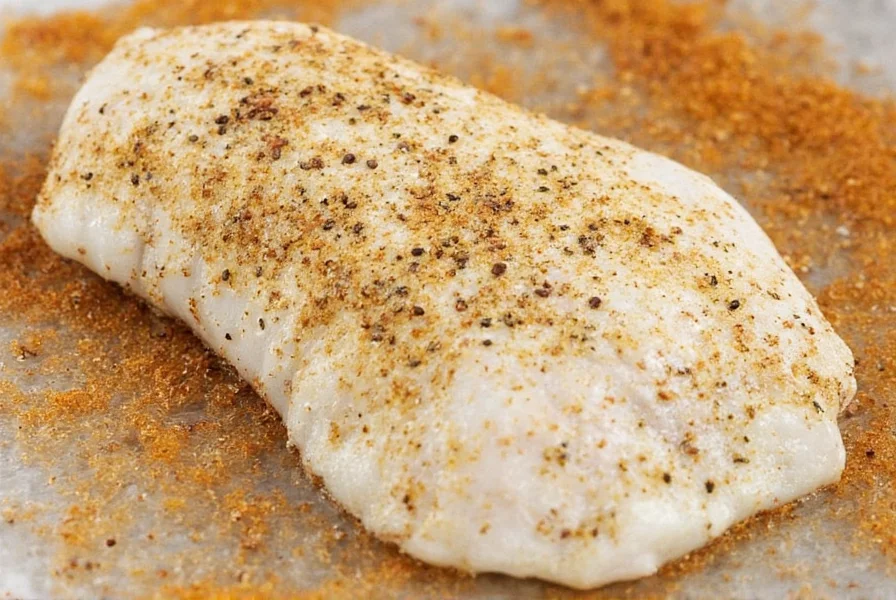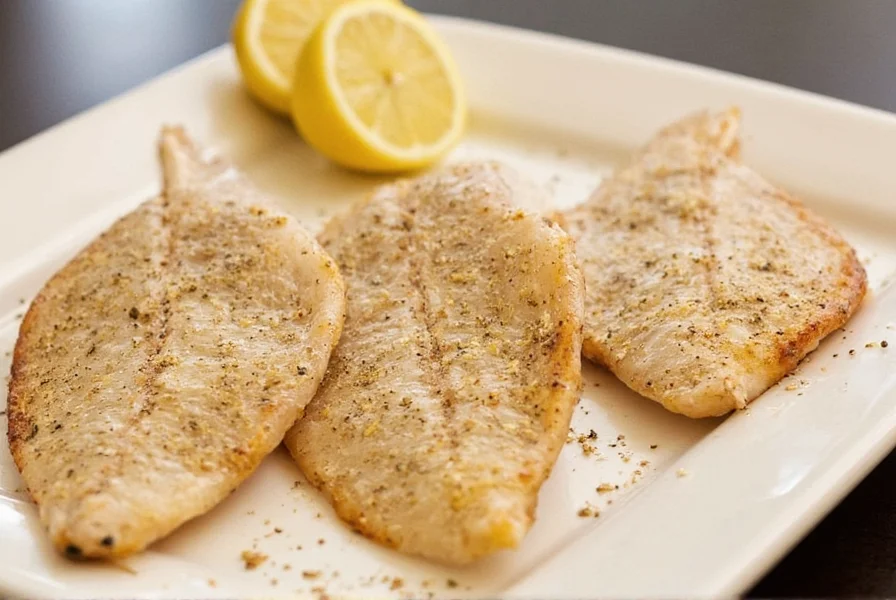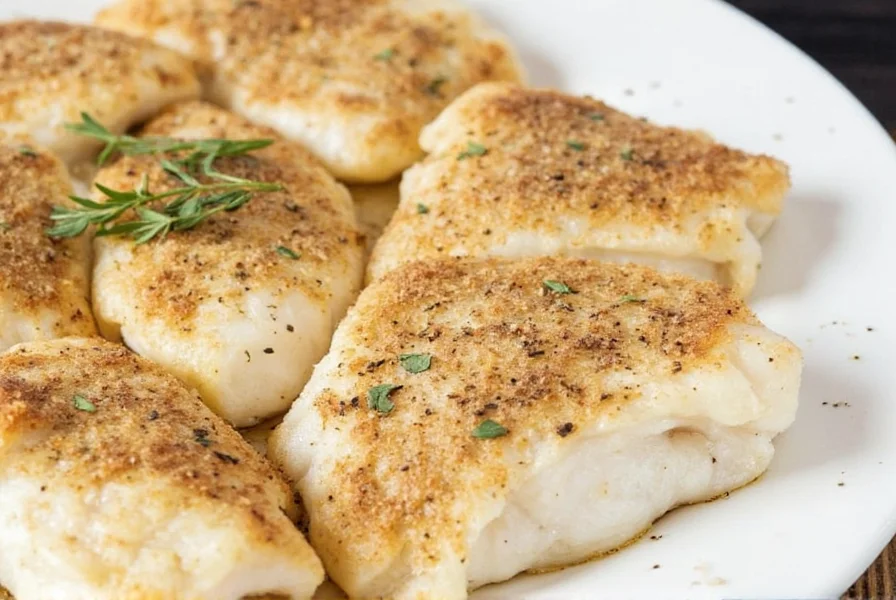Proper seasoning transforms tilapia from bland to extraordinary. This mild-flavored freshwater fish readily absorbs flavors but can become dry if over-seasoned or improperly prepared. Understanding the right balance of spices and timing makes all the difference in your final dish.
Why Proper Tilapia Seasoning Matters
Tilapia's delicate flavor profile requires thoughtful seasoning. Unlike stronger fish like salmon, tilapia won't overpower your spices, but it also won't mask poor seasoning choices. The right blend enhances without overwhelming, while the wrong approach can make even fresh tilapia taste cardboard-like.
Essential Seasonings for Perfect Tilapia
Start with these foundational ingredients for reliable results every time:
| Seasoning | Amount per 6oz Fillet | Function |
|---|---|---|
| Salt | 1/4 teaspoon | Enhances natural flavor, draws out moisture |
| Black pepper | 1/8 teaspoon | Adds subtle heat and complexity |
| Garlic powder | 1/4 teaspoon | Provides savory depth without burning |
| Paprika | 1/4 teaspoon | Adds color and mild sweetness |
These proportions create a balanced foundation for how to properly season tilapia fillets without overpowering the fish. For healthy tilapia seasoning options, omit added sugars and reduce salt by 25% if monitoring sodium intake.

Step-by-Step Seasoning Process
- Dry the fillets thoroughly with paper towels (moisture prevents proper seasoning adhesion)
- Mix dry seasonings in a small bowl before application
- Rub seasoning gently onto both sides, focusing on edges where flavor absorption is greatest
- Rest 15-20 minutes at room temperature before cooking (critical for when to season tilapia before cooking)
- Pat dry again if moisture appears on surface before cooking
Flavor Variations for Different Palates
Once you've mastered the simple tilapia seasoning recipe, experiment with these popular variations:
Mediterranean Style
Combine 1 teaspoon dried oregano, 1/2 teaspoon lemon zest, 1/4 teaspoon thyme, and 1 tablespoon olive oil. Perfect for baking or grilling.
Cajun Spice Blend
Mix 1/2 teaspoon cayenne, 1/2 teaspoon onion powder, 1/4 teaspoon smoked paprika, and 1/4 teaspoon dried thyme. Ideal for blackening or pan-searing.
Lemon-Herb Freshness
Whisk together 1 tablespoon fresh lemon juice, 1 teaspoon chopped dill, 1 teaspoon chopped parsley, and 1 minced garlic clove. Apply just before cooking for bright, fresh flavor.

Common Seasoning Mistakes to Avoid
Even experienced cooks make these errors when preparing tilapia spice blend proportions:
- Over-seasoning - Tilapia's mild flavor disappears under heavy spice coats
- Seasoning too early - Salt draws out moisture, making fish mushy if applied more than 30 minutes ahead
- Using fresh garlic - Burns easily during cooking; garlic powder provides consistent flavor
- Ignoring acid components - A touch of lemon or vinegar balances the seasoning profile
- Uneven application - Creates inconsistent flavor pockets in the finished dish
How Seasoning Affects Cooking Results
The right seasoning timing directly impacts texture. When you properly time when to season tilapia before cooking, the salt has time to penetrate without drawing out excessive moisture. This creates a more flavorful interior while allowing the exterior to develop a beautiful sear.
For pan-searing, let seasoned fillets rest 15 minutes before cooking to form a light crust. When baking, 20 minutes of resting time allows flavors to meld. Never season tilapia immediately before cooking - you'll miss the flavor development window.
Storage Tips for Pre-Seasoned Tilapia
If preparing in advance, follow these guidelines for how to properly season tilapia fillets for later cooking:
- Maximum 30 minutes at room temperature
- Up to 2 hours refrigerated in an airtight container
- Never freeze seasoned raw tilapia (alters texture)
- Place parchment paper between layers if stacking
Remember that salt continues to work even when refrigerated, so reduce salt by 25% if preparing more than one hour ahead.
Final Seasoning Tips for Success
Mastering how to season tilapia requires attention to detail. Always taste your seasoning blend before applying - your fingers make a perfect tasting utensil. Adjust proportions based on fillet thickness; thicker cuts can handle slightly more seasoning. And never underestimate the power of finishing with fresh herbs or a squeeze of citrus after cooking for that professional touch.
Frequently Asked Questions
How long should I let seasoned tilapia rest before cooking?
Allow seasoned tilapia to rest for 15-20 minutes at room temperature before cooking. This gives the salt time to penetrate the fish without drawing out excessive moisture. Never season immediately before cooking, as this misses the crucial flavor development window. For thicker fillets, you can extend to 25 minutes.
Can I use fresh garlic instead of garlic powder when seasoning tilapia?
While fresh garlic provides excellent flavor, it burns easily during cooking which can create bitter notes. Garlic powder distributes more evenly and provides consistent flavor without burning. If using fresh garlic, mince very finely and mix with oil first, then apply just before cooking. For most reliable results with how to season tilapia, garlic powder remains the preferred option.
What's the best way to prevent tilapia from sticking when cooking seasoned fillets?
Properly seasoned tilapia is more likely to stick if not handled correctly. Ensure your pan is properly preheated before adding oil, then heat the oil until shimmering but not smoking. Pat the seasoned fillets completely dry before placing in the pan, and avoid moving them for the first 2-3 minutes to allow a crust to form. Using a non-stick or well-seasoned cast iron pan yields best results for how to properly season tilapia fillets.
Should I season both sides of tilapia fillets?
Yes, always season both sides of tilapia fillets for balanced flavor. The bottom side creates a flavor foundation, while the top side receives direct heat exposure. When grilling, focus slightly more seasoning on the side that will face down first. For baking, ensure even coverage on both sides since heat surrounds the fish. This approach delivers the most consistent results for simple tilapia seasoning recipe.
Can I use the same seasoning for frozen tilapia as fresh?
Frozen tilapia requires different seasoning considerations. Always thaw completely and pat very dry before seasoning, as excess moisture prevents proper adhesion. Reduce salt by 20% since frozen fish often contains phosphate solutions that interact with salt. Allow extra resting time (25-30 minutes) for flavors to penetrate. For best results with frozen tilapia, consider a wet rub with oil or citrus juice to help seasoning adhere to the potentially drier texture.











 浙公网安备
33010002000092号
浙公网安备
33010002000092号 浙B2-20120091-4
浙B2-20120091-4